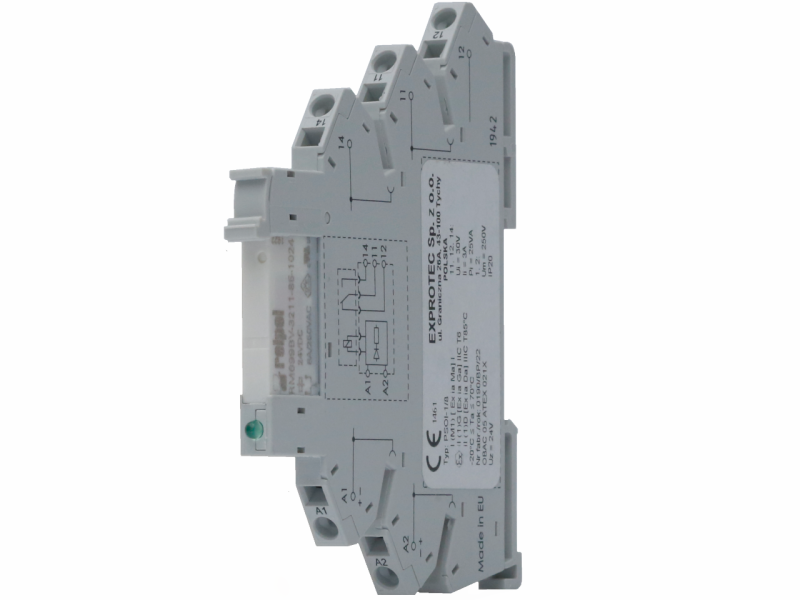The relay separator of intrinsically safe circuits is designed to separate non-intrinsically safe and intrinsically safe circuits.
In the non-intrinsically safe circuit there is a relay coil of the PSOI separator, while its contact can be switched to intrinsically safe circuits of protection rating ia or ib.
The relay separator of intrinsically safe and non-intrinsically safe circuits PSOI thus provides information from non-intrinsically safe control circuits to intrinsically safe or non-intrinsically safe circuits of automation systems.

